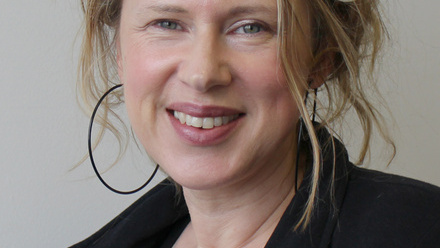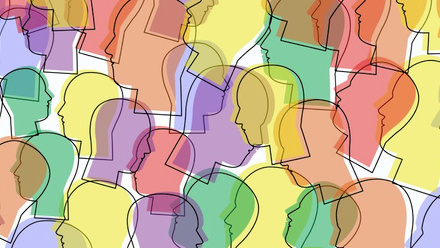How the Internet of Things can improve employee health

The IoT is the network of physical devices which can connect and exchange data, creating opportunities to input more information into computer-based systems to highlight efficiency improvements and other economic/human benefits.
By the end of 2017, the Fitbit activity tracker reported that it had more than 25 million active users monitoring their sleep, calories burned, steps taken and other health-related data.
Although some gadgets simply track health indicators, many more can actually help people living with chronic conditions manage them successfully.
So what technologies are out there? And how can they improve employee health?
Fitbit
This popular family of gadgets, software and accessories helps users keep track of a variety of activities and their effects on health. While the study: Effectiveness of activity trackers with and without incentives to increase physical activity (TRIPPA): a randomised controlled trial (2016), showed that Fitbits don’t directly improve most people’s health, others speculate that there may be an indirect benefit. People who use them tend to be less stressed about their health – and that reduced stress can make them healthier!
One key to maximising fitness tracker use is to help people exercise smarter. For example, a Fitbit can be used to help balance calorie intake with exercise by indicating how many more steps are needed to burn off food consumed that day. This allows people to set practical, achievable goals. Employees could try the MyFitnessPal app for this.
Sleep apps
Numerous sleep apps promise a range of outcomes, from simple insights and improved sleep, to monitoring of sleep apnea. Many apps tie in with Fitbits or audio sensors that monitor heart rate or breathing to provide insight into sleep patterns or regulate sleep by waking the user at the best time.
Some apps include relaxation instruction to help induce sleep, tackle insomnia and even take power naps during the day. Many include white noise sleep aids featuring rain, waves or other relaxing sounds.
Smart bed
There is even a SmartBed that monitors heart and breathing rates as well as the user’s general movements. This data is then processed to suggest better sleeping habits.
Depression-fighting app
In 2017, Apple Watch developers began studying an app that gathers data to better inform treatment decisions for people who live with major depressive disorder.
The app collects real-time passive and active high-frequency mental health data that can help clinical decision-making. The hope is that the data will help doctors predict behaviour, identify when someone’s mood is about to change or when post-traumatic stress disorder symptoms might start.
The app achieved good results in trials, with 95 per cent of study participants using the device daily to evaluate their moods and 96 per cent using it to measure cognition.
With more data and increased patient engagement in treatment, developers and clinicians hope to better define triggers and inform treatment/medication decisions.
Smart bra
Embedded in a ‘smart bra’ and other clothing, OMsignal’s wearable technology tracks heart rate and breathing rhythm so that users can push their limits safely by knowing when to take a break and when to push harder. The smart bra can last 10 workouts before recharge and is 'splash proof’. The manufacturer says it adapts to changes in the female body and can be used to monitor cardiac and/or pulmonary conditions.
Connected inhalers
IoT is already helping patients manage medications and monitor chronic conditions. Adding sensors to medicines or delivery mechanisms such as inhalers allows doctors to keep track of whether patients are sticking to their treatment plan.
With medication or monitoring devices connected to the internet, doctors can confirm that patients are taking their medication, and patients can receive reminders.
For example, Propeller’s Breezhaler device connects to its digital platform via a sensor, passively recording and transmitting usage data. This IoT device promises to provide real insights into patients’ triggers, reduce the hassle factor in managing asthma or chronic obstructive pulmonary disease, and strengthen connections to doctors and family members.
Under-skin glucose monitoring
People living with diabetes can now manage their condition with a continuous glucose monitoring (CGM) system, which uses a 90-day sensor implanted below the patient’s skin.
The sensor communicates with a smart transmitter, which then sends blood glucose levels to a mobile app on the patient’s phone.
Artificial intelligence pancreas
Another diabetes-related innovation is an automatic pancreas created through closed-loop technology. With software that relies on CGM data, a predictive algorithm and a tiny do-it-yourself computer, users can control the actions of an insulin pump. Because the systems are proactive, not reactive, they remove the burden of decision-making for patients wondering if their basal rate is too high or how much insulin they might need at any given time.
The results from these open-source collaborations and the tech have already yielded great results, with people spending more ‘time in range’ (from 58 per cent to 81 per cent) and enduring fewer extreme lows and highs in their blood glucose readings. The Juvenile Diabetes Research Foundation is working to speed development of this technology with modern insulin pumps.
Coagulation testing
A Bluetooth-enabled coagulation system allows haemophiliacs (people whose blood doesn’t clot properly) to check how quickly their blood clots.
Self-testing can help lower their risk of stroke or bleeding as well as reduce clinic visits by enabling them to transmit their results to doctors.
Activity trackers during cancer treatment
Deciding what treatment to prescribe to cancer patients next is often informed by how they reacted to their last treatment. So innovators have been using activity trackers to gather lifestyle data on patients being treated for multiple myeloma. The electronic trackers and patients log activity levels, fatigue and appetite, with all data saved to an app on their phone.
Data gathered before, during and after treatment can be used to monitor effects and inform further treatment decisions.
The future is here
With these and other new technologies improving treatment outcomes and empowering people to strive for better health, productivity may rise as employees save time and money with fewer doctor visits and sick days.
This article was provided by Aetna.
Supplied by REBA Associate Member, Aetna
Aetna is re-shaping and improving health care across the globe by developing solutions.







